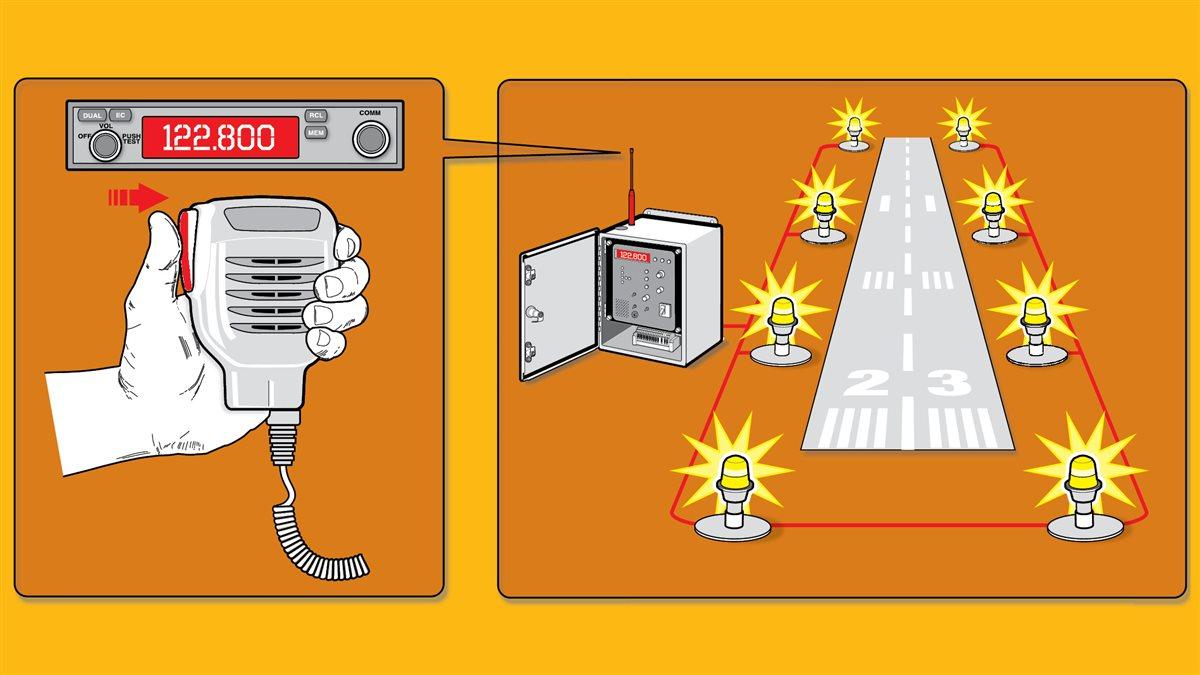How it works: Pilot-controlled lighting
Airport illumination through your transmit button

Already tuned to the airport’s unicom frequency, you press the radio transmit button seven times in quick succession, and suddenly the entire airfield lights up like a Christmas tree. White runway edge lights, blue taxiway lights, red and white visual approach slope indicators, strobe-like runway end identifier lights, and even the mesmerizing “rabbit” from the approach lighting system. The lights stay on for 15 minutes, plenty of time to land and taxi to the ramp. And if you want more time, repeat the series of button clicks to reset the timer.
Pilot-Controlled Lighting (PCL) systems are common at nontowered airports, and towered airports in the wee hours after controllers have gone home. PCLs almost always are activated on the common traffic advisory frequency and details can be found in the chart supplement (formerly known as the airport/facility directory).
There are several different kinds of PCL systems, but they all share similarities. Clicking seven times within five seconds when you’re five miles or less from the airport activates them, and the lights stay on for 15 minutes following activation. Some systems allow pilots to adjust the lighting intensity: three clicks for low, five clicks for medium, and seven clicks for high, once it’s been activated.
PCLs are popular because they save money. Rural airports don’t have to leave the lights on all the time at night and during periods of low visibility, when few—if any—airplanes are taking off or landing.



